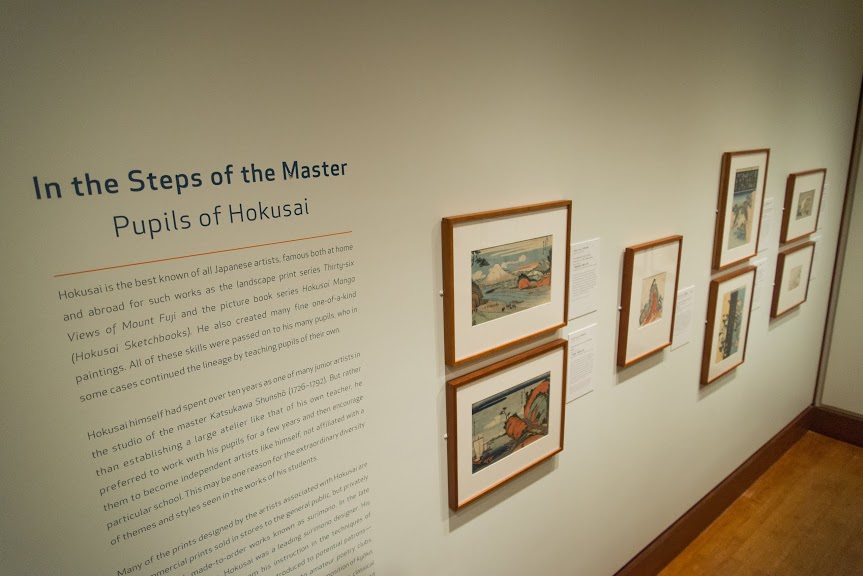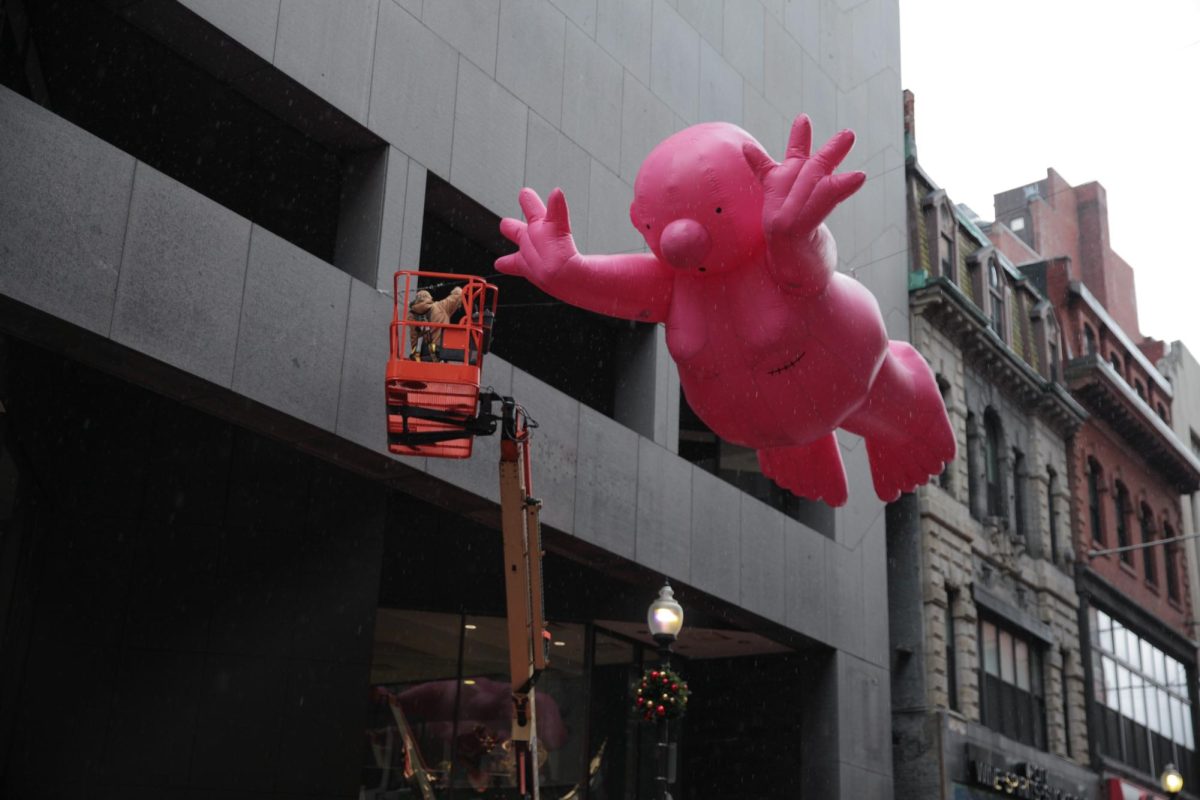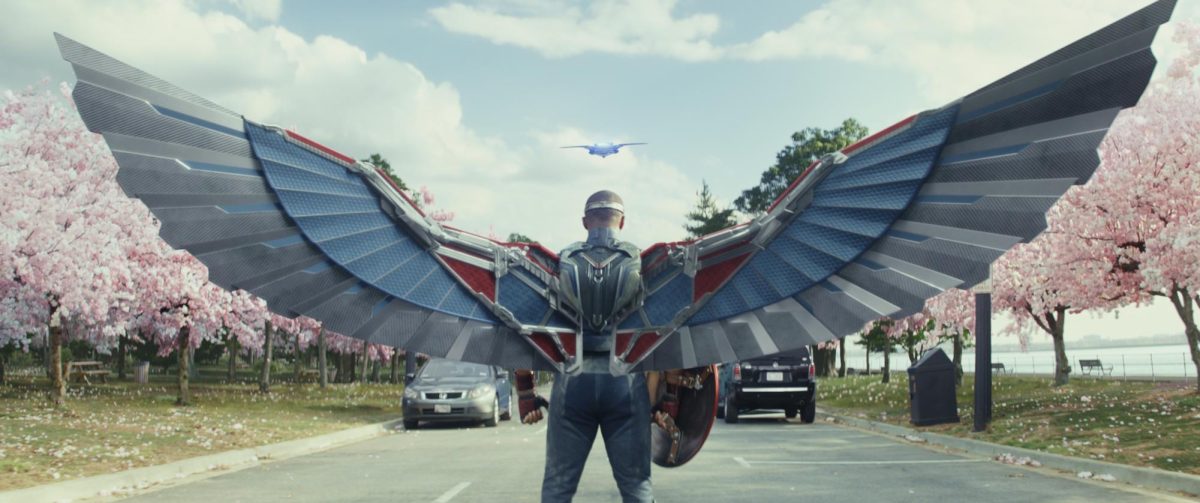By Liam Hofmeister, inside editor
A 160-year-old handscroll adorned with ink lies unrolled in the middle of the exhibit. The artist is Takai Kozan, a pupil of 19th century Japanese artist Katsushika Hokusai .
“In the Steps of the Master: Pupils of Hokusai,” a Japanese print gallery featuring work from the students of Hokusai, opened at the Museum of Fine Art (MFA)on Aug. 29. The exhibit features over 30 works like that of Kozan, all influenced by Hokusai’s styles.
The scroll depicts three scenes. First, two men wander through the mountains. The next image shows a monster following the pair. Once the duo finally reaches the woods, the monster emerges from brush and reveals his wide eyes and jagged teeth to scare the men.
The ink drawing is reminiscent of Hokusai’s humor, according to the exhibit, but the technique shows varied brushwork unlike that of “the Master’s”. Kozan may have learned some style from his master, but like many of Hokusai’s other students, he diverged to forge his own way with art.

According to exhibit curator Sarah Thompson, the work of the pupils brings further depth to examples of Hokusai’s mastery.
“While working on the recent MFA exhibition of the work of Katsushika Hokusai, I came across many interesting pieces by younger artists who had studied under him,” Thompson said in a public notice at the MFA. “Study of the work of Hokusai’s pupils adds a new dimension to our appreciation of the master himself, and they are fascinating artists in their own right.”
Hokusai’s work clearly inspired his pupils. Many prints in the exhibit depict images of beautiful women, historical warriors and landscapes, some of Hokusai’s renowned subjects.
However, like those of Kozan, each work had a distinct style that appeared to bean offshoot of Hokusai’s work. According to exhibit descriptions, after a few years, Hokusai encouraged his students to work independently and outside of art studios.

Hokusai’s pupil Yanagawa Shigenobu found his success in printing images of the courtesan parades in the Shinmachi pleasure quarter, a brothel district of 1820s Japan.
Ryuryukyo Shinsai, another student, focused his work on symbols of the gentile class of Japan. He printed measuring sticks and a disassembled alarm clock to represent the virtues of mathematics, as well as perched hawks to symbolize upper-class hunters.
“I never really thought of his pupils,” Paul Komar, an Oregon professor of oceanography visiting Boston, said.“There’s quite a diversity of things here, from an octopus’s tiny tentacle to a large landscape.”
These artists studied with Hokusai in person, and Hokusai helped connect them to patrons to support their art. Many of the prints in the exhibit were commissioned by and for the affluent, allowing Hokusai’s students to profit from their work.

Regardless of the art’s purposes, Hokusai influenced the first wave of his successors greatly.
“I think it’s great to see the seed Hokusai planted,” Janet Hirsch, a Bostonian who frequents the MFA, said. “He’s the one we know, but look at what else he brought to the world.”
The MFA will house “In the Steps of the Master: Pupils of Hokusai” until Feb. 15, 2016.
Photo by Scotty Schenck










